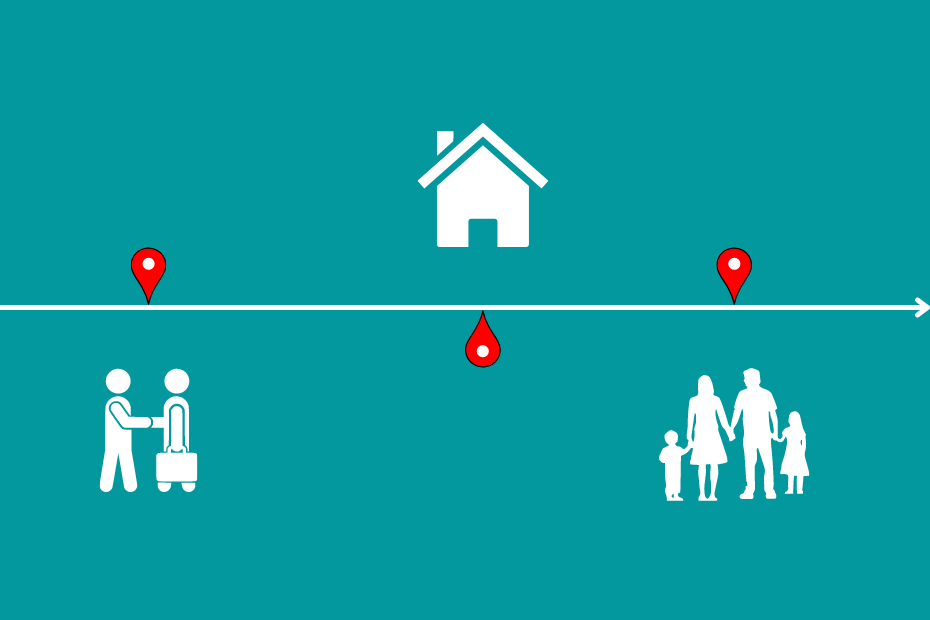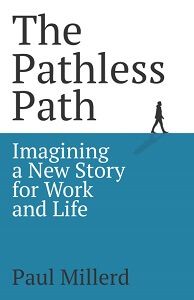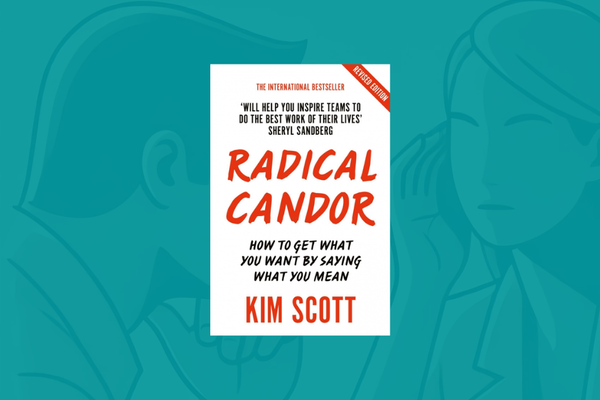The Pathless Path: Summary & Notes
The Pathless Path is a book about what happens when you achieve success based on others' terms and still feel miserable. It’s about our unhealthy relationship with work, money, and accomplishments and how to fix that.

We are looking for patterns and copying them our whole life. We choose schools, apply for jobs, buy houses and construct our life to be similar to our peers. Sometimes with the goal to be seen as successful, but often just because we don’t have better ideas.
We follow the Default Path, while there are other options.
The author, Paul Millerd is a former strategy consultant turned writer, and digital creator. He shares his departure from the Default Path and his ongoing exploration of the Pathless Path.
I had mixed feelings while reading Paul’s book.
First I had the hunch that the only thing he does is revisit Tim Ferris’s 4-hour work week a few years later and point out possibilities on how others are hacking a living in the modern world. But he does so much more (maybe too much).
There are different parts of the book:
- The Pathless Path is started by the author sharing his personal journey, his challenges and doubts. I find this the most exciting part.
- Then the author borrows concepts, stories, and examples from others to back up his Pathless Path theory. We can find here exercises, good questions to ask, and valuable resources we can revisit later.
- After this Paul Millerd jumps between his personal story and explains it with the previously introduced concepts. It started to get a little bit boring here for me because of the repeated elements.
Paul did his research and going through his footnotes is valuable by itself. Though sharing the sixth point of view to back up a concept sounds good but makes the book less readable.
What kind of book is The Pathless Path?
The Pathless Path is at the intersection of self-help and business/money books. It also outlines the recent trends and the future of working.
I like to rage about books before giving my five cents. It took longer than I expected to find the value in the author’s work, but there are original ideas, good stories, and resources worth revisiting in The Pathless Path.
It’s a book about recent trends which may make it less relevant in five years. But it is covering several important and under-discussed topics like our relationship to work.
I don’t give you a detailed summary of the Pathless Path, but rather I share some questions the book sparked, the main concepts, and my favorite quotes:
Questions to ask after reading The Pathless Path

- Is this a decision I make to avoid feeling stuck?
- When should you be conscious about your dreams and avoid the default path? After finishing high school: going to university or not, finding a place to live, picking a profession...
- Are you on the default path now?
- “If work dominated your every moment, would life be worth living?” - Andrew Taggart
- What are my fixed points in life? Are they impacted by my upbringing? Should I change that?
- What should I add as a fixed point to my life?
- What is holding me back as a fixed point?
Summary & Notes on The Pathless Path

The Default Path
- Default path: "By default path, I mean a series of decisions and accomplishments needed to be seen as a successful adult. These vary by country, but in the United States, we refer to this as the “American Dream,” which means a life centered around a good job, owning a home, and having a family."
- Fixed points: "Even though the pathless path does not lead to a specific destination, there may be what Venkatesh Rao, a writer, and consultant, calls “fixed points.” A fixed point is a non-negotiable goal that you plan to achieve, no matter what. These fixed points are often a product of our unique cultural scripts.
- The Problem with Fixed points: “The problem with these default fixed points is that they are culturally derived rather than a product of our unique motivations and desires."
- Instead of doing what you want you go with the default: "These people were my friends and when they were accepted into elite business schools like Harvard and Stanford, it seemed obvious that I should do the same thing. This is the trap of prestigious career paths. Instead of thinking about what you want to do with your life, you default to the options most admired by your peers."
- Escape feeling stuck: "With every new job, I convinced myself I was thriving. But what I was really doing was trying to escape feeling stuck."
- Education is more serious than work: "I had studied advanced math and physics thinking I would apply those skills, but instead I spent my summers doing simple math on Excel spreadsheets. The notion of spending the rest of my life."
- The work for educated people is not rewarded: "Getting a job by itself was the goal after the second world war. It meant a stable income, a house, and the ability to provide for a family. Not today. Or as Seth Godin puts it: "The educated, hardworking masses are still doing what they’re told, but they’re no longer getting what they deserve."
- Preemptive defensiveness is the notion of seeing every action as an attack on yourself. "I overcorrected and developed something my friend Visakan Veerasamy calls “preemptive defensiveness.” I saw myself in opposition to the world, seeing the simplest question as an attack on everything I stood for."
- The Cost of Inaction: Compare partial success or failure with the cost of inaction. Not doing anything to change may lead to even worse results than trying and failing. "The final two questions of Ferriss’ exercise are the most powerful: What could be some benefits of an attempt or partial success? What is the cost of inaction in three months, 12 months, and in a few years?"
Values, Contribution and Change
- Stay true to yourself: “Bronnie Ware has taken care of many elderly people in the final stages of their lives. In a blog post titled, “Five Regrets of The Dying,” one of the most viewed online posts, she shared her reflections. The most common regret? Not staying “true to themselves” in their lives and focusing too much on what others expected of them.”
- From getting ahead to coming alive: "I was able to shift away from a life built on getting ahead and towards one focused on coming alive."
- Next step is often not visible during change: “On my way toward leaving my job, I never had a clear picture of my next step.”
- Successful on your own terms: "I am happy. I am successful on my own terms. Because if your success is not on your own terms, if it looks good to the world but does not feel good in your heart, it is not success at all." – Anna Quindlen
- Show up and contribute to find the path: “By experimenting with different ways of showing up in the world and making small, deliberate changes, we can open ourselves up to the unexpected opportunities, possibilities, and connections that might tell us what comes next.”
- Seek knowledge when times are tough: "The only people who achieve much are those who want knowledge so badly that they seek it while the conditions are still unfavorable. Favorable conditions never come." – C.S. Lewis
- What to do with freedom: “Ultimately, figuring out what to do with freedom once we have it is one of the biggest challenges of the pathless path.
- Long-term games with long-term people: On a similar note like the Finite and Infinite Games, Naval Ravikant offers, “play long-term games with long-term people.




